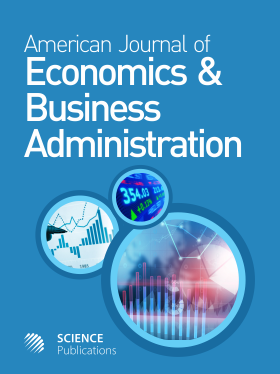The Ethical and Non Ethical Mutual Funds Comparison
- 1 University of Calabria, Italy
Abstract
Problem statement: One of the astonishing new developments in the financial community is the rise of ethical investments during the last decade. Particularly, the recent financial crisis has determined a major attention towards an ethically oriented finance based on social investments and environmental benefits that can create greater corporate crisis prevention. Because of the sheer size and importance of the ethical mutual funds, we thought to compare the ethical and non ethical mutual funds. Approach: The aim of this study was to describe the ethical and non ethical mutual funds under Italian and foreign law highlighting how some factors, such as performance, typology (equity, balanced, fixed income), geographic location, management fees, characterize these funds in different way. Results: The analysis has been carried out collecting a data set of 219 mutual funds published on www.morningstar.com. The data set is subdivided in 109 ethical mutual funds and 110 non ethical mutual funds. The study uses a multi-disciplinary approach and it is led by a Multiple Correspondence Analysis (MCA) which puts in evidence the principal characteristics of the mutual funds by their projection on a factorial plane. Later the multivariate analysis carries out typologies of mutual funds clusters with particular characteristics by a Cluster Analysis. The study confirmed the existence of different characteristics with reference to the ethical and non ethical mutual funds. Particularly, it puts in evidence three groups of funds which are inside homogeneous but heterogeneous between them by the characteristics considered. The first groups, defined “negative ethical performance”, is composed of 152 funds. The second groups, named “positive non ethical performance”, is characterized by non ethical fund (50.23% of them is present in this group). The third cluster is called “young funds” and it is composed of funds born in the period 2005-2008. Conclusion: Finally, the results indicated that the ethical funds are different from the non ethical funds with regards to the performance and put in evidence that the ethical funds governed the financial crisis triggered by subprime in a better way than the non ethical funds. Consequently we argue that it is important that the interests of the financial community are addressed to the development and promotion of ethically oriented finance and of its instruments.
DOI: https://doi.org/10.3844/ajebasp.2010.360.365

- 8,013 Views
- 6,379 Downloads
- 4 Citations
Download
Keywords
- Mutual funds
- ethical mutual funds
- multivariate analysis
